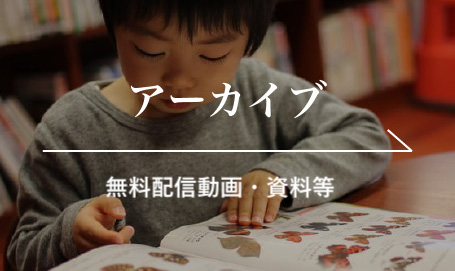< VOLUME 47, No.2 >
Tanaka Saori. A Study of the Relationship between Young Children’s Motor Abilities and Physical Activities : Focusing on Five Year Old Children’s Physical Activity Counts in a Day.
Research on Early Childhood Care and Education in Japan, 2009, 47(2), 112-120.
This study intended a quantitative and qualitative examination of the relationship between motor ability acquisition and physical activities in young children, and to clarify factors affecting this acquisition. The methodology included measuring young children’s motor coordination, and classifying the data into high-scoring and low-scoring children. In addition, physical activity counts, physical activity intensity and vigorous physical play were also measured by fitting the children’s waists with bi-axis accelerometer for seven days. As a result, during all days on which the children were measured, the group of high-scoring children showed significantly higher scores in their moderate or vigorous physical activity counts and their physical activity counts. The results suggest that there was a close relationship among motor abilities, physical activity counts and the intensity of physical activity.
Keywords: young children, motor abilities, physical activity counts, physical activity intensity, physical play activity
—————–
Ogasawara Akiko, Maeda Yasuhiro. Developmental Support for Preschool Children through Outdoor Day Care.
Research on Early Childhood Care and Education in Japan, 2009, 47(2), 121-131.
Outdoor day care was provided individually to preschool children with symptoms of development disorders. Most of the children showed a kind of clumsiness but the stimulation of outdoor day care effected improvement. This developmental progress helped them to create, determine, and execute activities on their own. Accordingly, their initiative and motivation toward these activities were also improved. The results demonstrated the importance of children’s firsthand learning experiences by trial and error at their own paces. Furthermore, it is important to have nursery staff who have the capacity to wait and watch carefully how children will experience these outdoor activities. Finally, it is suggested that the outdoor day care method is very effective to stimulate preschool children’s development.
Keywords: outdoor day care, development disorders, somesthesia, self-initiatives, firsthand experiences
—————–
Suzuki Yuko. The Concept of “KANSEI”, Sensitivity, in Young Children : On the Development of a Scale to Evaluate Young Children’s Sensitivities.
Research on Early Childhood Care and Education in Japan, 2009, 47(2), 132-142.
This work aims to define the concept of “Kansei,” or sensitivity in young children through an evaluation scale based on the development process. In Part I, the concept of Kansei was classified into three main categories, 28 sub-categories and 64 items based on a questionnaire completed by kindergarten and day nursery teachers. Finally, the 31 most relevant items were selected to be used for an evaluation scale. In Part II, the concept of Kansei was divided into three different factors based on the analysis of data collected in another questionnaire: factor 1: original sensibility and creativity, factor 2: active response, and factor 3: emotional and moral empathy. These three factors include 26 items. Using these three factors and 26 items, a scale was invented to evaluate young children’s sensitivities. In Part III, the validity of the scale was examined and the result verified its high reliability. This invented evaluation scale can be used for understanding the richness of young children’s sensitivities from their behaviors.
Keywords: “kansei”, young children, development of an evaluation scale, 909 episodes collected from kindergarten and day nursery teachers, three factors
—————–
Sato Yasutomi. The Cooperative Process of Setting and Sharing Goals during Infancy.
Research on Early Childhood Care and Education in Japan, 2009, 47(2), 143-152.
This research aims to examine how infants cooperate to establish common goals for their interactions with things and other people, and to clarify the processes they use to set and share goals. A videotape of a kindergarten was analyzed and indicated the following points: (1) the cooperative process of setting and sharing goals is not a simple linear process but a qualitative spiral one which requires reflection and expanding cooperation to examine and modify the goals. (2) in helping children set goals, preschool teachers should, ideally, participate in infants’ activities and cooperate with them. The teachers also need to understand infants’ initiatives as they are related to their strong motivation, and to support them to utilize the surrounding resources to develop increased self-organization.
Keywords: preschool education, cooperation, 5-year-olds, a spiral process, self-organization
—————–
Hoshi Miwako, Shiozaki Miho, Katsumata Maki, Ohkawa Rika. Daycare Practitioners’ Beliefs about Babies Crying : Reconsideration of Baby Care Theory through an Interview Research.
Research on Early Childhood Care and Education in Japan, 2009, 47(2), 153-163.
This study examined the thoughts of daycare center practitioners regarding appropriate reaction to crying babies. Seventy-four daycare teachers participated in this research. First, they watched some videos of babies crying in a daycare situation. Afterwards, they were questioned about the practitioners’ reactions in the video scenes. Their opinions were collected during a group discussion and analyzed. The results indicated some common beliefs: “Crying infants should be immediately calmed by adults and should include receptive behaviors such as taking the child in their arms and saying sympathetic words.” “Demands communicated by crying should be accepted because crying helps establish an affective bond between baby and practitioner.” In addition, historical examination of older beliefs suggested reconsideration of today’s infant care.
Keywords: crying, daycare center, infant, attachment
—————–
Koike Michiko. The Effects of Kindergarten Teachers’ Musical Sensitivities on Children’s Musical Expression.
Research on Early Childhood Care and Education in Japan, 2009, 47(2), 164-173.
This study investigates the relationship between kindergarten teachers’ musical sensitivities and young children’s abilities in musical expression. To examine the relationship, criteria were developed to measure teachers’ musical sensitivities, musical orientation, their own abilities in musical expression, practice in musical activities, and young children’s abilities in musical expression. A questionnaire survey using these criteria was distributed to 198 kindergarten teachers who lived in Ehime prefecture. The results indicate that the teachers’ hearing and seeing sensitivity and their sensitivity to children’s speech and behavior correlate directly to young children’s abilities in physical expression. The results also show that the score demonstrating kindergarten teachers’ abilities in physical expression has a statistically significant relationship to practice in musical activities and to young children’s abilities in musical expression.
Keywords: kindergarten teachers, young children, musical sensitivity, ability in musical expression
—————–
Sunagami Fumiko, Akita Kiyomi, Masuda Tokie, Minowa Jun, Yasumi Katsuo. Practical Knowledge in Preschool Teachers’ Narratives : Analysis of Teachers’ Narratives on a Video of “Clean-up Time”.
Research on Early Childhood Care and Education in Japan, 2009, 47(2), 174-185.
The purpose of this study is to investigate the relationship between preschool teachers’ practical knowledge and preschool characteristics. This study analyzes three preschool teachers’ narratives based on a video of “Clean-up Time”. The results suggest that (1) all preschool teachers have a common purpose; the children should participate in clean-up time voluntarily, but (2) each preschool teacher has her own practical knowledge about what “Cleanup Time” means. (3) This practical knowledge held by the teacher is connected to the particular characteristics of that teacher’s preschool such as the area of playground, the number of teachers per a class and the daily time schedule.
Keywords: practical knowledge, clean-up time, preschool teacher’s narratives, preschool characteristics
—————–
Kusanobu Kazuyo, Suwa Kinu. A Study on Speciality of Today’s Preschool Teachers : Searching for Preschool Teachers’ Physical Knowledge to Resonate with Children.
Research on Early Childhood Care and Education in Japan, 2009, 47(2), 186-195.
The purpose of this study is to clarify the speciality of today’s preschool teachers who support children’s growth and assist their parents. It analyzed the teachers’ ability to construct a common psychological basis between children and preschool teachers focusing on the collective care. The methodology was based on inter-subjective participatory observation. The result revealed five characteristics of physical knowledge: “resonance by rhythms of words,” “resonance by the direction of a body,” “resonance by the shape of a body,” “resonance by movements and rhythms of a body,” and “expanding resonance by movements and rhythms of a body.” A preschool teacher’s “intelligent sensitivity” has a great role in furthering a child’s ability to merge these five characteristics. Such an intelligent sensitivity is one of the essential specialities for today’s preschool teachers and it will be necessary to activate it for future childcare.
Keywords: preschool teachers, specialty, physical knowledge, sensitivity resonance
—————–









